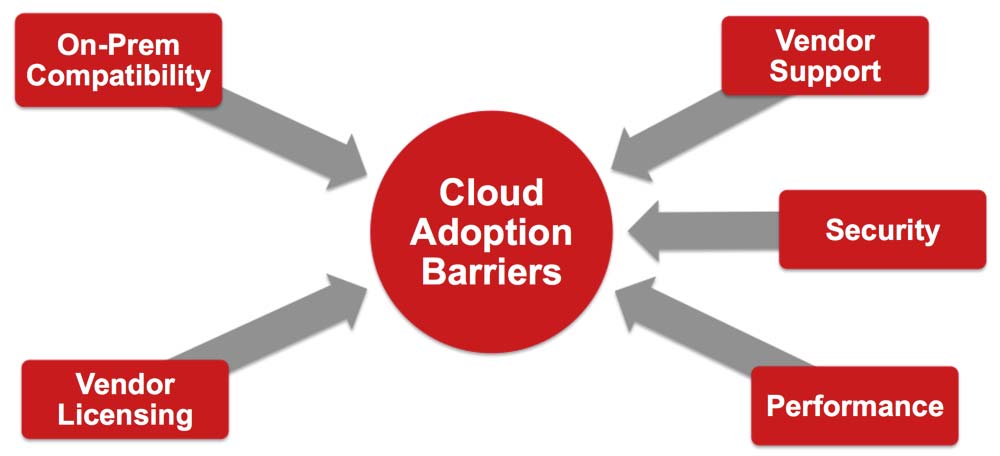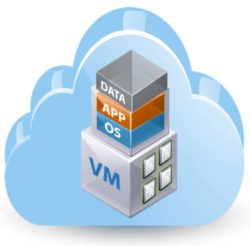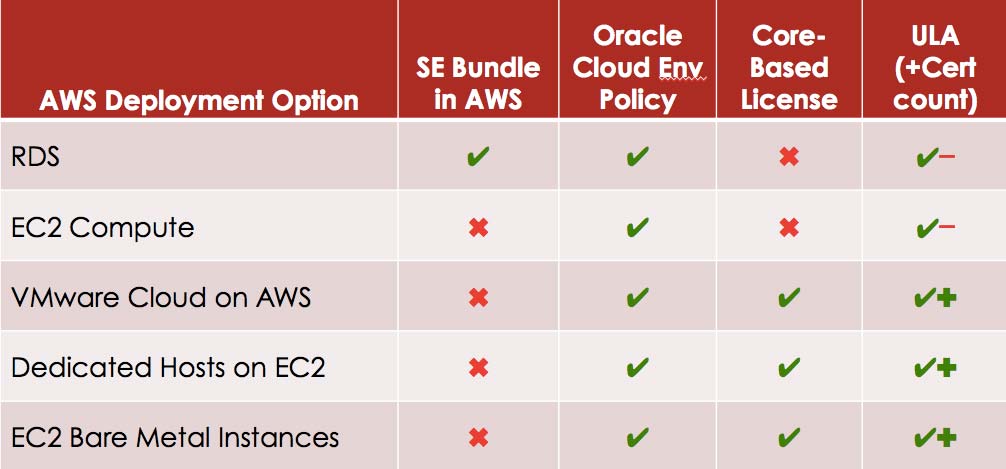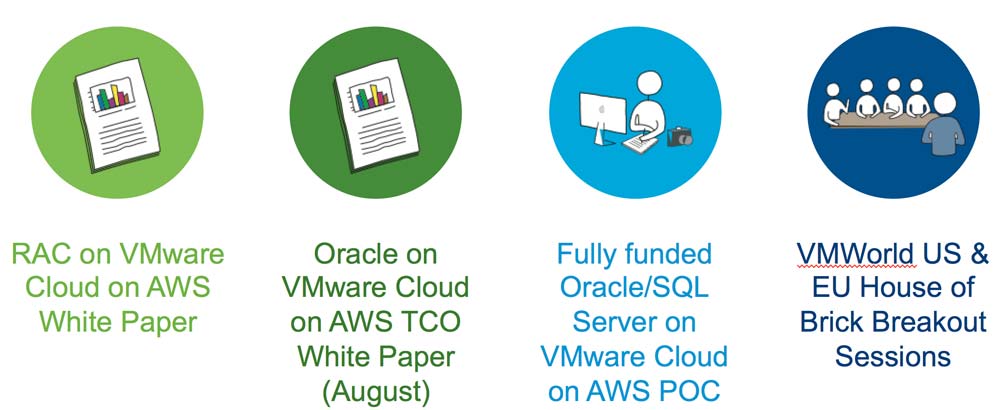Nathan Biggs (@nathanbiggs), CEO
Yesterday, I had the privilege of being invited to participate in a webinar offered by the VMware Cloud on AWS team. It has been an exciting opportunity to work with VMware and AWS, as this offering has become ready for business-critical Oracle and SQL Server based applications.
I invite you to watch a replay of the webinar, but here is an overview of what I presented:
The Cloud Technology Adoption Lifecycle
House of Brick helped our first virtualization customer move their Oracle EBS application into a VMware environment all the way back in 2006. Over the past 12 years, the practice of virtualizing business-critical Oracle and SQL Server workloads has become standard practice for most of our customers.

When it comes to business-critical systems in the public cloud however, the adoption rate is still in the early stages. While cloud computing is certainly a topic on everyone’s radar, because of certain perceived or real barriers, customers have not yet moved their most business-critical systems into the public cloud.
Barriers to Public Cloud Adoption

Some of the barriers shown in the graphic above are perceived, such as Performance, Security, or Vendor Support. These perceived barriers are easily addressed in cloud migration planning and design. However, the other two barriers shown in the diagram, Vendor Licensing, and On-Premises Compatibility are real issues that have kept the majority of Oracle and SQL Server customers away from the public cloud.
The VMware Cloud on AWS Addresses On-Premises Compatibility
Since VMware is the industry leader in server virtualization, especially for business-critical workloads, the lack of seamless VMware-compatible public cloud options has been a barrier for our customers.
House of Brick recently performed a VMware Cloud on AWS proof-of-concept (POC) for a large state government agency. This agency wanted to use the public cloud to provide Disaster Recovery (DR) for hundreds of their Oracle and SQL Server databases, which were virtualized using VMware. Since they could not find an acceptable and seamless VMware-compatible public cloud offering, they were implementing a plan to migrate off of VMware and onto Microsoft’s Hyper-V for all of these databases, so they could use the Azure cloud. While the Azure cloud is a good cloud option, the process of changing virtualization technology introduced considerable risk and cost. The POC performed by House of Brick demonstrated how they could easily extend their current VMware environment into the public cloud using the VMware Cloud on AWS. There was no need to introduce new technology into their operations. Instead they were able to leverage existing tools and processes to naturally extend their existing on-premises environment.
Vendor Licensing is the Biggest Barrier
Addressing the barrier of Vendor Licensing was a more critical part of the webinar. At VMworld in 2017, the opening general session featured a presentation about the VMware Cloud on AWS. One of the early access customers was Medtronic, who was invited to present their experience on-stage.
Karine Semmer, Medtronic’s Head of IT Hosting Transformation & Modernization Program made the following statement when asked about their plans for cloud adoption:
“The one challenge which I think many of you will recognize if you have done anything contractually around licensing going from on-prem to cloud, that again is our more significant challenge. One that is true for the cloud industry.”
She identified the biggest barrier that the industry faces for moving business-critical systems into the public cloud—contracts and licensing.
In yesterday’s webinar, I discussed SQL Server licensing in the cloud. It was a brief discussion because SQL Server customers have terrific support from Microsoft in a cloud environment if they purchase Software Assurance. Oracle licensing on the other hand, is more complicated and nuanced.
House of Brick has blogged on Oracle licensing, including in the cloud, several times, but it is worth summarizing my statements from the webinar. In their Oracle license agreements, 
In on-premises VMware environments, customers license all of the cores of the hosts where VMs are running Oracle software. In the public cloud, where counting physical processors is an impossible task, this licensing model does not work.

In an earlier blog post, I announced that House of Brick has begun endorsing the use by our customers of Oracle’s cloud policy in the VMware Cloud on AWS. This means that Oracle customers in the VMware Cloud on AWS have a variety of licensing options.
The VMware Cloud on AWS Offers More Oracle Licensing Options Than Any Other Cloud
AWS, as a public cloud provider, has been very assertive and innovative in offering options to their customers for licensing Oracle software. Their RDS License Included offering is a terrific way to get access to Oracle SE workloads while including the license in the cost of the RDS instance. EC2 Compute instances can be deployed using Oracle’s cloud policy and counting vCPUs. AWS then took the step of offering customers a dedicated host option with Dedicated Hosts on EC2 and EC2 Bare Metal Instances.
The VMware Cloud on AWS is another innovation that provides Oracle licensing options, while incorporating the value of seamless integration with on-premises VMware environments. Since many customers are running Oracle RAC in their on-premises VMware environments, the VMware Cloud on AWS is the best option for extending the RAC cluster into the cloud.
In summarizing the webinar, I invited people to consider the white papers that House of Brick has (and will be) releasing, to consider a fully-funded VMware Cloud on AWS POC, and to join us at VMWorld in the US and Europe
I encourage you to check out the webinar recording at your convenience. If you have any questions, or are interested in exploring a VMware Cloud on AWS POC, please contact us.








